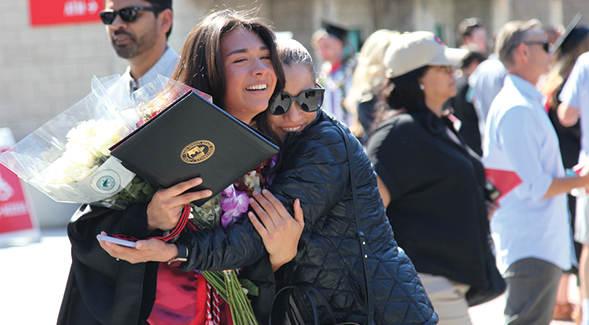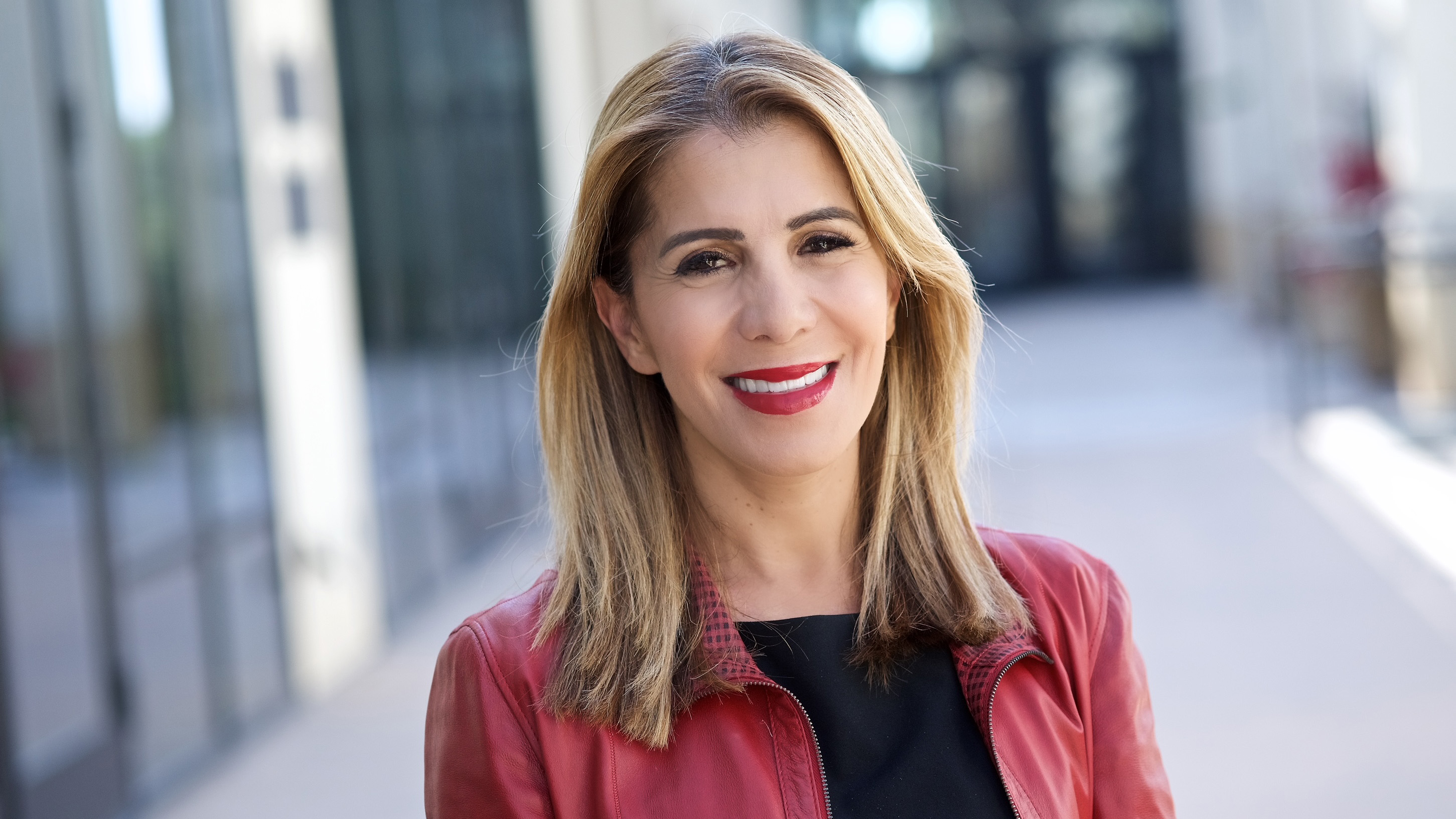SDSU Rates High in Educating Latinx Students
The university is No. 15 in the U.S. for the number of bachelors degrees awarded to Hspanic/Latinx students in 2021-22, figures show.

“Out of all of the colleges I had attended from these field trips, I always felt the most at home when I was at SDSU because I would see others like me around campus,” said Gonzalez, now a junior transfer from San Diego City College working on an electrical engineering degree.
“I knew from a young age that I wanted to attend SDSU no matter what because I knew I would be welcomed with open arms and be given support throughout my journey.”
It’s a story borne out by the numbers.
SDSU stands out in the annual “Top 100 Colleges and Universities for Hispanics” issue just out from Hispanic Outlook on Education, placing in the top 15 in three different measures of degree activity, and in the top 40 on two others.
SDSU is first in the nation for the total number of degrees granted to Hispanic/Latinx students in foreign languages, literature and linguistics, one of several individual majors tallied in the organization’s report. It’s No. 10 for natural resources and conservation majors.
SDSU is No. 15 in the nation for the total number of bachelor’s degrees awarded to Hispanic/Latinx students in 2021-22, the academic year used for all of the organization’s rankings. Hispanic Outlook crunched numbers obtained from a federal database for its annual report.
In addition, SDSU is:
- No. 36 for the total number of master's degrees awarded to Hispanic/Latinx students; and
- No. 40 for the total number of Hispanic/Latinx students enrolled, about 13,000.
“Whenever I have a question they always look for an answer and if they don't have one they look for someone else who does,” she said. “They have also given me the opportunity to create a community here at SDSU by having events for us students throughout the year. I am always reminded that I am not alone in this journey, and support is readily available.”
Rocio Lopez, a senior who serves as the College of Engineering representative to Associated Students, also credited the MESA program for its support and said extracurricular activities and student organizations have “broadened my horizons, expanded my skill set, and provided me with a platform to make a meaningful impact.”
Lopez applauded SDSU’s growing presence in Imperial Valley, where his mother grew up and more than nine out of every 10 students are Hispanic/Latinx.
“The access to a quality secondary education right in their own community is a testament to SDSU's commitment to making education accessible to all,” Lopez said.
SDSU was designated a Hispanic-Serving Institution (HSI) by the U.S. Department of Education in 2012, providing additional access to grants and scholarships.
“We continue to search for good indicators and metrics of success on our journey to becoming a true HSI that are tangible forms of evidence that we are on track,” said Emilio Ulloa, associate chief diversity officer for HSI and regional affairs.
“This recognition is a testament to the intentionality that our faculty, staff, administration, and students leverage to support our Hispanic/Latinx students’ educational and vocational paths, by centering their experiences and removing barriers in ways that all students can benefit and be proud of.”
Ulloa said SDSU initiatives such as the Progresando en Salud program for aspiring health career professionals, the university's Title V and Title III HSI grants, and the programs of the Latinx Resource Center “are contributing to our commitment to academic excellence, diversity, equity and inclusiveness, and our dedication to students’ success.”
Hispanic/Latinx students accounted for more than 33% of the combined enrollment at SDSU’s San Diego and Imperial Valley campuses in fall 2022.
Like SDSU, most of the institutions in Hispanic Outlook’s top 100 four-year institutions for Hispanic/Latinx enrollment — 84 of them — are public.
Rodney Manford and Paulina Castellanos Wade contributed to this article.


